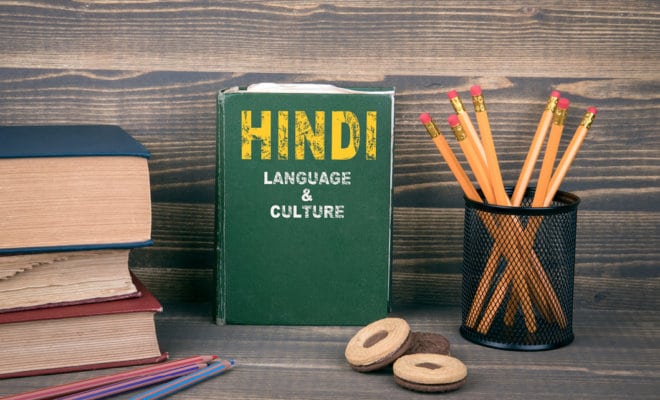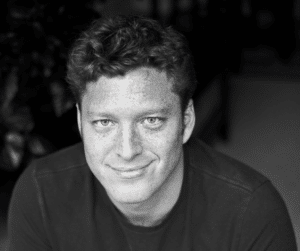Books
Hindi In America

Representational Image
Photo: Bigstock
Despite the growing Indian American population, formal language instruction in Hindi has been lagging in the United States.
The 2016 American Community Survey revealed that Hindi is the 11th most popular foreign language in the United States. The survey found that 810,000 people in the country speak Hindi, the most popular spoken Indian language in the United States. It is followed by Urdu and Gujarati. Overall, more than 3.6 million people in the United States speak various South Asian languages.
Despite the growing Indian American population and the fact that with 260 million speakers, Hindi is the fifth most widely spoken language in the world, behind Mandarin, Spanish, English and Arabic, formal language instruction in the language has been lagging in the United States.
Several U.S. universities offer programs and courses in Hindi. The University of Chicago offers a comprehensive Hindi program with a focus on language, culture and literature. The Department of Asian Languages and Literature at the University of Washington offers a wide range of courses, including modern and medieval Hindi literature at both the graduate and undergraduate levels. Several other universities, such as University of California Berkeley, University of Texas, University of Pennsylvania, Princeton University, Harvard University and Yale University offer Hindi programs. Some offer other regional South Asian languages, such as Urdu, Bengali, Telugu, Tamil and Punjabi, as well.

Yuva Hindi Sansthan camp.
The importance of Hindi as a foreign language in U.S. universities has been recognized ever since India emerged as a fast-growing economy. Even though enrollments for Hindi and other South Asian regional language courses remain low, the awareness is on the rise.
Bhavya Tiwari, who teaches in the Department of Modern and Classical Languages at the University of Houston says: “Hindi is a global language like Spanish and French. There is a lot of scope for Hindi in the U.S. The language can be used in the government as well as the private sector. It also has a big literary tradition.”
Foreign language centers, which attract both amateur and professional learners, have begun offering Hindi instruction. U.S. intelligence and security agencies have also been recruiting Hindi translators.
Tiwari says that as South Asia rises in international trade, Hindi’s importance is rising as well.
But enrollment numbers in Hindi courses are still abysmal. According to the Modern Language Association of America, enrollments in languages other than English between 2009 and 2016 fell 15 percent in U.S. colleges and universities. According to the association’s Language Enrollment Database, just 1,426 students enrolled in Hindi language courses in 2016, down from 1,813 in 2013 and its peak of 2,173 in 2009. By contrast, Spanish, the most popular foreign language in the United States had more than 712,000 students in 2016, followed by French (176,000), American Sign (107,000) and German (107,000).

Jason Grunebaum, senior lecturer in Hindi, Department of South Asian Languages and Civilization at University of Chicago: “Interest in Hindi and other South Asian languages ebbs and flows.
Prof Jason Grunebaum, senior lecturer in Hindi, Department of South Asian Languages and Civilization at the University of Chicago, says: “Interest in Hindi and other South Asian languages ebbs and flows. We’re currently in a nationwide decline in enrollment in all foreign languages at the university level.”
Grunebaum says: “You’ll see for Hindi that there was a steady increase of enrollment until about 2009, after which enrollments have declined. The 2018 figures are about what the figures were in 2002 nationwide. At the University of Chicago, where I teach, and where we teach more South Asian languages than nearly any university, we’ve also been subject to the periodic ebbs and flows of student interest. Things come and go in cycles — the only foreign language to have consistent, steady growth over the past decade has been Korean.” Enrollment in Korean language courses almost doubled from 7,146 in 2006 to 13,936 in 2016, according to the MLA.
Hindi may not be experiencing the same boost because Indian immigrants are English speakers and do not consider it important to take up Hindi professionally. Ashok Ojha, president of the Yuva Hindi Sansthan in New Jersey, says, “While Hindi is taught in major universities and ivy league colleges, it remains absent from curriculums at the elementary and middle school levels.”
A few years ago, Ojha contacted North Penn High School in Pennsylvania to host a Summer Hindi Language program. He today serves as director of YHS Startalk Hindi programs, which offer Hindi language and culture camps for students. While Hindi is now being taught in several school districts across New Jersey, Pennsylvania and Texas, Ojha says YHS’s goal is to integrate Hindi into the curriculum in schools across the United States.
Within the Indian American community, informal teaching with students going to temples or community centers to learn Hindi has by far been the most popular. However, Ojha says, “The need for formal teaching that involves the language to be taught in context and culture is missing amongst the community.”
He admits that despite grandiose plans to promote Hindi as an important foreign language in the country, he finds it hard to find support: “Parents are reluctant as they do not see professional advantages of studying Hindi, even though there are many. Also, the fact that Indian community is further segregated in several regional languages too makes it difficult to cohesively promote one language.”
And indeed, that’s the philosophy that many newage Indian food brands are utilizing to gain acceptance for their products in an already cluttered market.




1 Comment
You must be logged in to post a comment Login